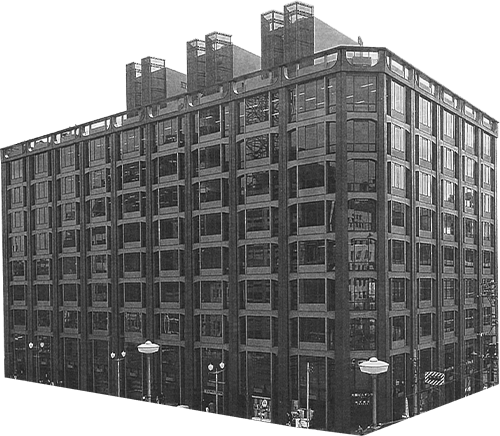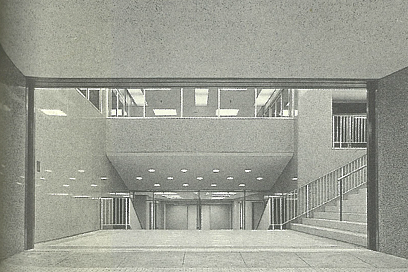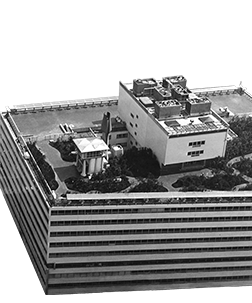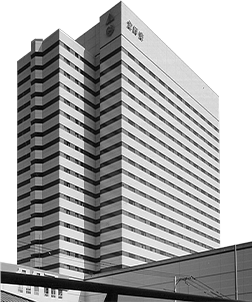 04
1967
04
1967
Tokyo
The Yaesu Daibiru Building
A Bold Project
That Leverages Its Location
as an Urban Gateway
Integration with the Yaesu Underground Shopping Mall
The Yaesu Daibiru Building was completed in August 1967, two years and eight months after construction began. It had nine aboveground floors, five underground floors, and four penthouse floors. Its exterior was an elegant grayish brown, and several design decisions were made to ensure its suitability for its location in the gateway of the capital. A typical example is the fact that no projecting billboards were permitted to be attached to the building so as not to spoil the surrounding landscape. This, combined with Togo Murano’s highly artistic design, created a clean and elegant impression.
The first floor had showcase windows that faced the sidewalk and illuminated the street at night to avoid a dark streetscape. The building’s designers were also intent on creating a bustling commercial atmosphere, so they connected the building to the Yaesu underground shopping mall via a six-meter-wide underground passageway. At the time, the Yaesu underground shopping mall was the largest of its kind in Japan, and it connected the Yaesu Daibiru Building directly to Tokyo Station. Visitors liked this arrangement, because they could enjoy commuting and shopping without the need for rain gear. A 74-car garage was also connected to the building’s ground level by means of two car elevators installed in the basement floor, which was unusually large given the size of the Yaesu Daibiru Building.
The building’s exterior appearance, its nighttime illumination, and the provision of parking spaces in consideration of the traffic situation were described by Kudo during his speech at the groundbreaking ceremony as follows: “Our company’s management policy is that we have not only a responsibility to the shareholders and financial institutions that finance us but also to the well-being of our employees, and that we must contribute to the local community along with our other duties. Accordingly, this new building must also make a functional and aesthetic contribution to the local community—in other words, to Tokyo.”
-
1927 1931 Hibiya Daibiru Buildings
No. 1 and No. 2 -
2007 International Operations
-
- An Unexpected Discovery of a Good Property
- Mutual Trust and a Long-Term Perspective as Points of Agreement
- The Acquisition of a Property in Hanoi Through Unity of Philosophy
- Implementing Daibiru Quality Through Building Renovations
- Challenges in Australia, Our Second Overseas Expansion Target
- The Discovery of 275 George Street
- Difficult Contract Negotiations with JHG
- Overcoming Several Unexpected Difficulties
-




